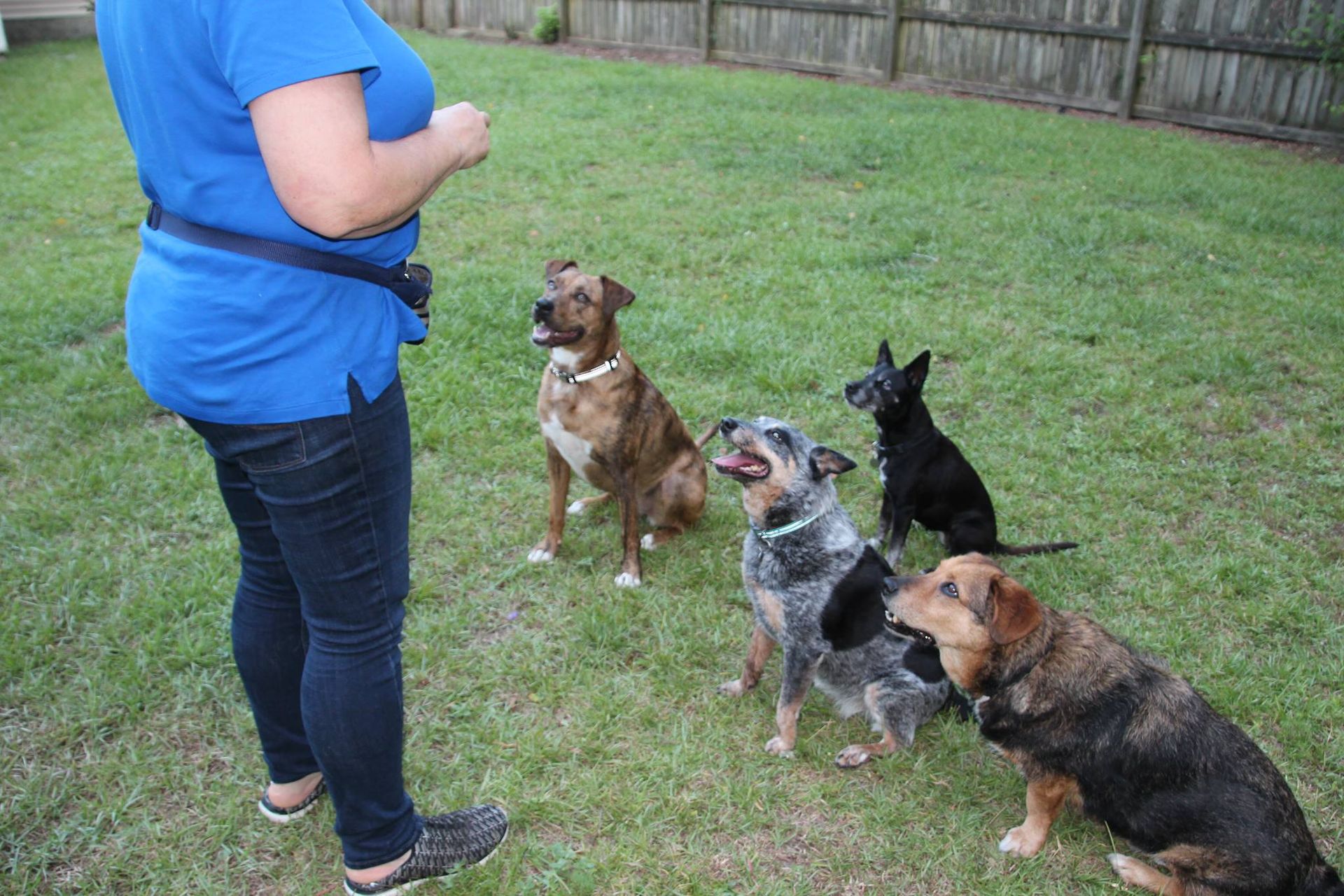Get in touch
555-555-5555
mymail@mailservice.com
Happy Owner, Happy Dog: Tips for Commanding Your Canine Companion

Bringing a dog into your life can be an incredibly rewarding experience. Dogs offer companionship, loyalty, and unconditional love. However, to ensure a harmonious relationship with your furry friend, it's crucial that they listen to your commands. A well-trained dog is not only a joy to be around but also safer and happier. In this blog post, we'll explore some basic tips to help you get your dog to listen to your commands and know when it's time to bring in a professional trainer.
1. Start Early and Be Consistent
Training should begin as soon as you bring your new pup home. Dogs are quick learners, and the earlier you start, the better. Consistency is key in dog training. Use the same commands, hand signals, and rewards consistently to avoid confusion.
2. Positive Reinforcement is the Way
Dogs respond best to positive reinforcement. Reward good behavior with treats, praise, and affection. When your dog associates obeying your commands with positive outcomes, they're more likely to repeat those behaviors. Avoid using punishment or fear-based training methods, as they can lead to anxiety and aggression.
3. Use Clear and Simple Commands
Keep your commands clear, simple, and distinct. Use one-word commands like "sit," "stay," "come," and "heel." Avoid long sentences or complicated phrases that may confuse your dog.
4. Be Patient and Persistent
Training a dog takes time and patience. Be persistent and don't get discouraged if your dog doesn't pick up on a command right away. Some dogs may take longer to learn than others, so stay consistent and keep practicing.
5. Practice Regularly
Regular training sessions are essential for reinforcing commands and improving obedience. Short, daily sessions work best, focusing on one or two commands at a time. As your dog progresses, you can introduce more commands.
6. Socialize Your Dog
Socializing your dog is a vital aspect of training. Exposing your dog to different people, animals, and environments helps them become well-rounded and less anxious. Socialization can also improve their ability to follow commands in various situations.
7. Recognize Signs of Difficulty
Sometimes, despite your best efforts, your dog may have difficulty learning certain commands or exhibit problem behaviors. Here are some signs it might be time to bring in a professional trainer:
- Aggression: If your dog displays aggressive behavior towards people or other animals, consult a trainer immediately.
- Excessive Fear or Anxiety: Dogs that are overly fearful or anxious may require professional help to build confidence and overcome their fears.
- Persistent Behavioral Problems: If your dog consistently ignores your commands or exhibits problematic behaviors such as excessive barking, digging, or chewing, a trainer can help address these issues.
- Complex Training Needs: For advanced training needs such as agility or specialized tasks, a professional trainer with expertise in those areas is invaluable.
Conclusion
Training your dog to listen to your commands is an investment in a happy and harmonious relationship between you and your canine companion. Remember to start early, use positive reinforcement, be patient, and practice regularly. If you encounter difficulties or see signs of behavior issues, don't hesitate to seek the help of a professional trainer. With time, effort, and the right guidance, you'll enjoy the rewards of a well-trained, happy, and obedient dog. Happy owner, happy dog!



Office
460 King St. Suite 200
Charleston, SC 29403
All Rights Reserved | Happy Owner Happy Dog | Website Designed by CēSuite Digital